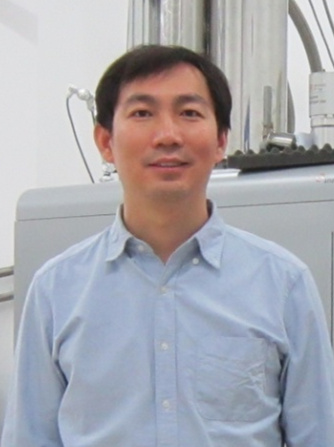Prof. Jian Wang: Quantum Griffiths singularity, quantum metallic states and Ising superconductivity in 2D Superconductors (2019/11/21) |
| ( 2019-11-03 ) |
Title | Quantum Griffiths singularity, quantum metallic states and Ising superconductivity in 2D Superconductors
| Speaker |
Prof.Jian Wang International Center for Quantum Materials, School of Physics, Peking University |

| Time | 10:00am, November 21, 2019 | Place | Exhibition Hall at the HFNL building | | Brief Bio of the Speaker |
Jian Wang, Changjiang Distinguished Professor of China's Ministry of Education, received his bachelor’s degree in Physics from Shandong University in 2001, and PhD degree in condensed matter physics from Institute of Physics, Chinese Academy of Sciences in 2007. From 2006 to 2011, he worked as a Postdoc and Research Associate at Penn State University, USA. He became a tenure-track Associate Professor and established a research group at Peking University in 2010. In 2017, Jian Wang was promoted to Professor. He was selected to Changjiang Distinguished Professor of China's Ministry of Education in 2016 and Chief Scientist for National Key R&D Program of China in 2018. He won Sir Martin Wood China Prize in 2015. His current research interests are quantum transport properties of low dimensional superconductors and topological materials. Jian Wang with collaborators discovered log-periodic quantum oscillations in a solid state system, quantum Griffiths singularity in 2D superconductors, and tip-induced unconventional superconductivity in topological materials. Furthermore, as the leader Jian Wang also for the first time revealed interface-modulated Ising superconductivity, demonstrated high Tc in one unit cell thick FeSe films by direct transport and Meissner evidences, and detected eletron-electron interaction in topological materials. In recent years, he has authored more than 80SCI papers including around 60 corresponding author publications in Science, Science Advances, Nature Materials, Nature Physics, Nature Communications, PNAS, Physical Review X, Physical Review Letters, Nano Letters, Advanced Materials, and ACS nano etc. Jian Wang’s lab at Peking University possesses ultralow temperature-high magnetic field measurement systems and low temperature scanning tunneling microcopy/spectroscopy-molecular beam epitaxy combined ultrahigh vacuum system etc. More details: http://www.phy.pku.edu.cn/icqmjianwanggroup/
| Abstract | Two-dimensional (2D) superconductors have become an important platform to study novel quantum physics. I would like to talk about three important topics in 2D crystalline superconductors, quantum Griffiths singularity[1-5], quantum metallic state[6,7], and Ising superconductivity[4,7,8]. After decades of explorations, suffering from the subtle nature and sample quality, whether a metallic ground state exists in a two-dimensional system (2D) beyond Anderson localization is still a mystery. Our work reveals how quantum phase coherence evolves across bosonic superconductor-metal-insulator transitions via magneto-conductance quantum oscillations in high-Tc superconducting films with patterned nanopores. A robust intervening anomalous metallic state characterized by both resistance and oscillation amplitude saturations in the low temperature regime is detected, which suggests that the saturation of phase coherence plays a prominent role in the formation of the anomalous metallic state. [6] Furthermore, we carried out a systematic transport study on the macro-size ambient-stable ultrathin crystalline PdTe2 films grown by molecular beam epitaxy. Remarkably, in perpendicular magnetic field, the film undergoes the quantum phase transition from quantum metal to weakly localized metal with the presence of intermediate quantum Griffiths singularity. Our findings lead to a global phase diagram of 2D superconducting system with strong spin-orbit coupling. [7] References: [1] Science 350, 542-545 (2015) [2] Physical Review Letters 114, 107003 (2015) [3] Physical Review B 94, 144517 (2016) [4] Nano Letters 17, 6802 (2017) [5] Nature Communications 10, 3633 (2019) [6] Science DOI: 10.1126/science.aax5798 (2019) [7] arXiv: 1904.12719 [8] Physical Review X 8, 021002 (2018)
|
|
|
|
